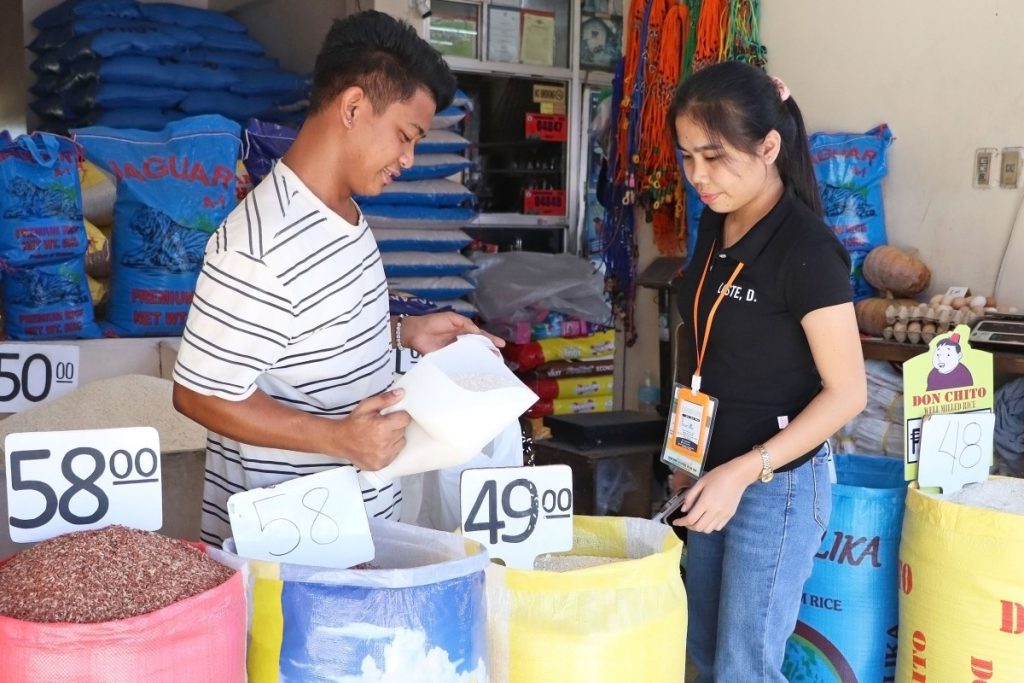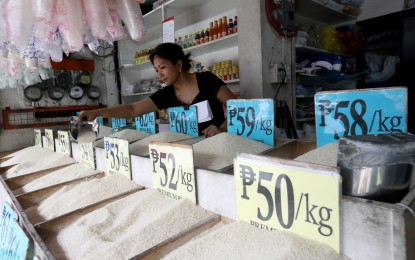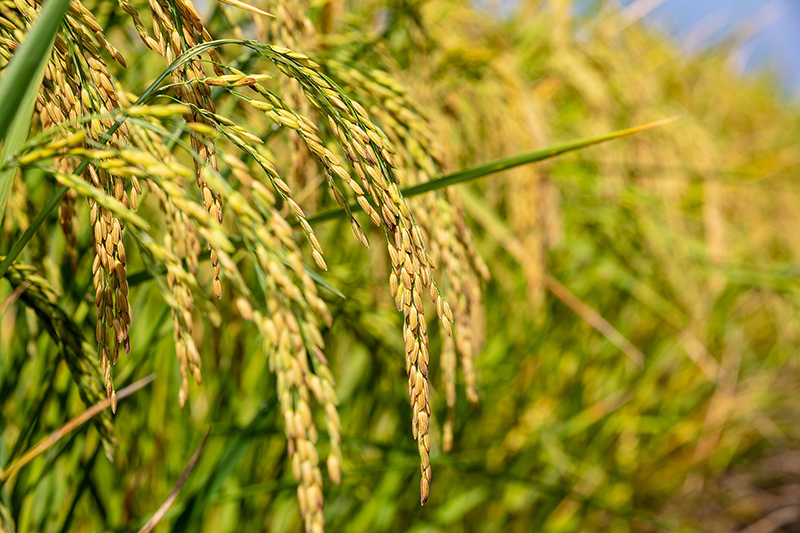Tags
Rice farmers, consumers in Leyte navigate challenges amid inflation

Francisco Abaño is a 69-year-old rice farmer in Alangalang, Leyte. He faced numerous challenges while cultivating rice crops on his field.
Apart from the physical toil, various other costs are associated with rice farming, such as workers’ wages, fertilizers and pesticides, and daily expenses that accumulate over time during tilling and harvesting periods.
After months of cropping, Abaño’s cavan of rice from the farm is brought to the market in hopes of expanding his profit. To compensate for the expenses incurred, he buys rice grains per cavan and sells them as rice products with his rice produce.
“Nag-crowdsourcing kami, namamalit kami hin humay hin hitaas nga presyo kompara ha merkado para mayda magbaligya ha amon, tapos igbabaligya namon as bugas, upod an amon sarili nga humay hin presyo nga diri lugi, ngan ma-income kami,” he said.
(We do crowdsourcing. We buy rice grains at a higher price than the market price so that small farmers can sell them to us. Then, we sell it as a rice product along with our rice yields at a profitable price.)
Abaño’s earnings are based on the price of rice per kilogram. This is how he has coped with increasing inflation rates, particularly for staple commodities such as rice.
The current inflation rate in Eastern Visayas is 3.4 percent, a slight increase from the previous year’s 3.3 percent. Due to this 0.1 percent increase, the prices of local commodities, especially essential ones like rice, are gradually rising.
In February 2024, the inflation rate of rice, a crucial commodity in the region, was reported at 27.9 percent, which demanded adaptability from farmers and consumers.
In March, the inflation rate slightly decreased to 26.3 percent. The overall inflation rate for food and non-alcoholic beverages this year is 6.5 percent, making it the major contributor to the March 2024 inflation rate.
Abaño, like many other farmers, faces the challenge of high inflation rates. However, he can overcome this challenge with the help of the resources provided by the Department of Agriculture (DA).
These resources include fertilizers, quality seeds, and favorable monetary interventions. With this support, Abaño can deal with the rising costs and steep inflation rates, making him a key contributor to the regional market.
The plan of action
DA has increased its support for farmers like Abaño, who rely on agricultural subsidies for critical relief. By coordinating with local government units, the DA has played a crucial role in mitigating the effects of soaring inflation and ensuring a steady support system for farmers.
Macapañas explained that they are closely coordinating with the local government to assist farmers in producing local goods and commodities.
Among these programs are basic assistance such as fuel subsidies through fuel assistance cards, cash assistance or direct subsidies, and the provision of quality seeds.
In addition, a program has been initiated in collaboration with the Philippine Rice Research Institute (PhilRice) to provide basic assistance to farmers in their production process.
The program includes the provision of quality seeds and fertilizer to aid farmers in their struggles, as well as fuel assistance to support their machinery in producing and transporting goods to the market.
Macapañas shared that each farmer is eligible for an estimated direct subsidy of P10,000. However, he emphasized that this subsidy is based on specific criteria, such as being an active member of a farmers’ association, operating in an irrigated area, and having previously used quality seeds to facilitate the adoption of hybrid rice technologies.
He added that the budget for hybrid seeds for this year’s May to October cropping period has been allocated to 42,070 hectares.
Consumer’s response
With the increase in goods on the market, local consumers have adapted to meet their daily necessities.
Marlie Tuang Pedere suggested that the solution to the issue of high prices in the market is to adjust the budget to prioritize the quality of goods over quantity.
She shared her tip for surviving a day on a budget: to reduce the number of groceries purchased and choose affordable products instead.
“Diri nala ginkokompleto it mga paraliton, gin ba-budget la it sakto ngan maabutan hit budget. Sugad hiton isda mahal, edi syempre kun baga makasura ka na’n usa ka kilo, ma medya la anay. Diri nala gihap kami natigda hin bugas; kada adlaw nala napalit,” Pedere said.
(We don’t necessarily buy everything on the list; we budget and stick to it. For example, if the fish is expensive, we would only buy half a kilo. We do not stock up on rice; we buy it daily.)
When allocating her grocery budget, she prioritizes only the essentials she consumes daily, such as food items like biscuits and personal care products like sanitary napkins. One reason for this is that the prices of personal care and miscellaneous goods and services have a high inflation rate of 2.9 percent, making them relatively expensive.
“Kumbaga, it kinahanglanon la anay it paliton, kun pa garbo, ayaw la anay kita, bisan la pan pulbo, di la anay, unahon ta la anay it makakaon para ta’t pamilya nga makakaon hin baga sakto,” Pedere emphasized.
(In essence, what is necessary to buy should be prioritized first. Even if it means we won’t have extra luxuries, we should prioritize purchasing food for our family to have enough to eat.)
Amid challenges, local farmers and consumers in the region epitomize resilience. Their experiences underscored the indomitable spirit of the Filipino people, who, against all odds, continue to forge ahead, one harvest at a time. (AAC, PIA Leyte with reports from interns, Meraflor Pecore and Nova Mae Quinte)
https://pia.gov.ph/features/2024/04/29/rice-farmers-consumers-in-leyte-navigate-challenges-amid-inflationPublished Date: April 29, 2024






